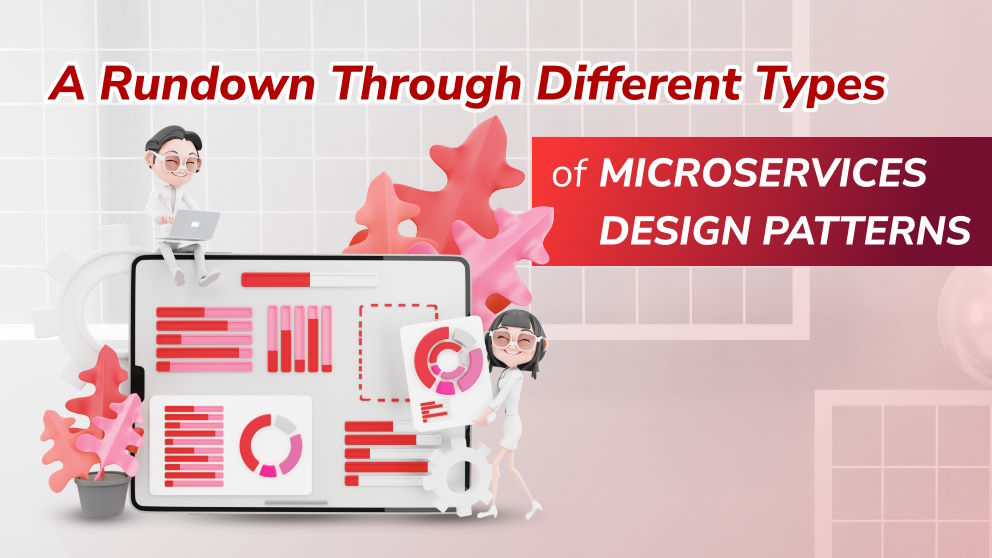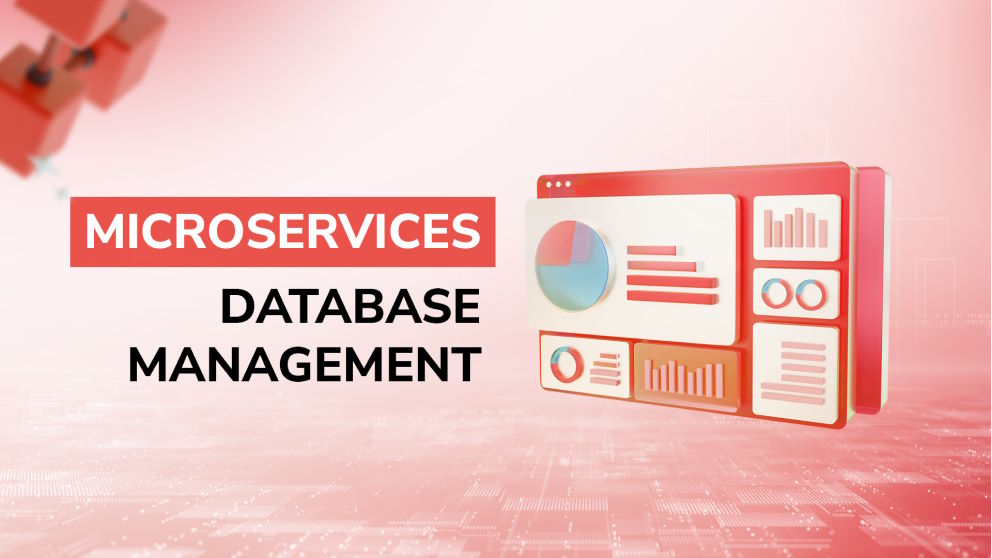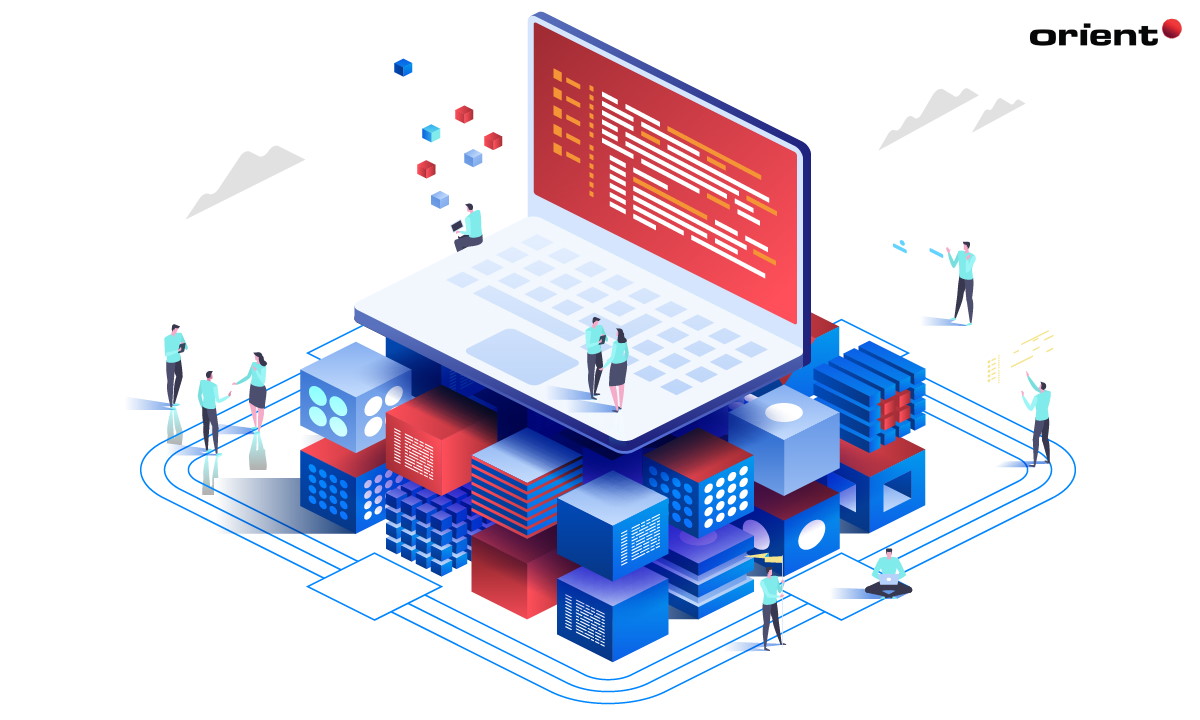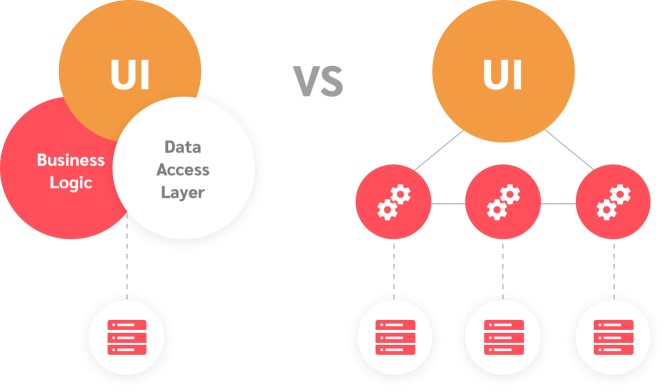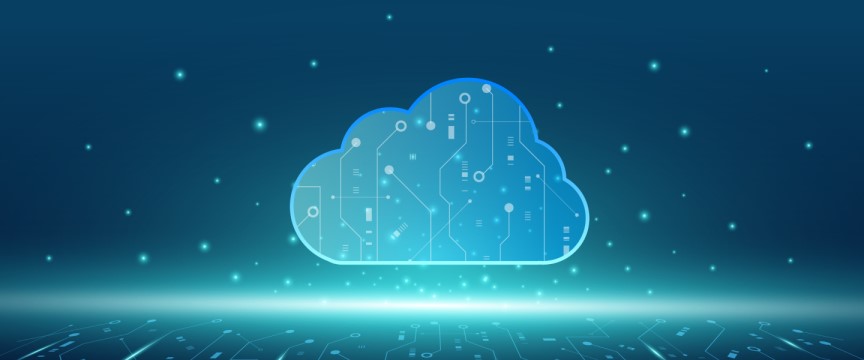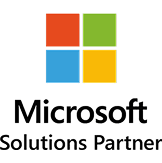Some people may think that software engineering best practices are just about writing clean code. However, in reality, developers can learn best practices from many different areas of software development, from design and architecture to deployment and testing. Can you believe that bringing your system to the cloud is one of them? It may sound simple, but the fact is that most software engineers overlook small details.
Let’s start with these 24 practices to make your application even more reliable.
Types of Software Development Best Practices
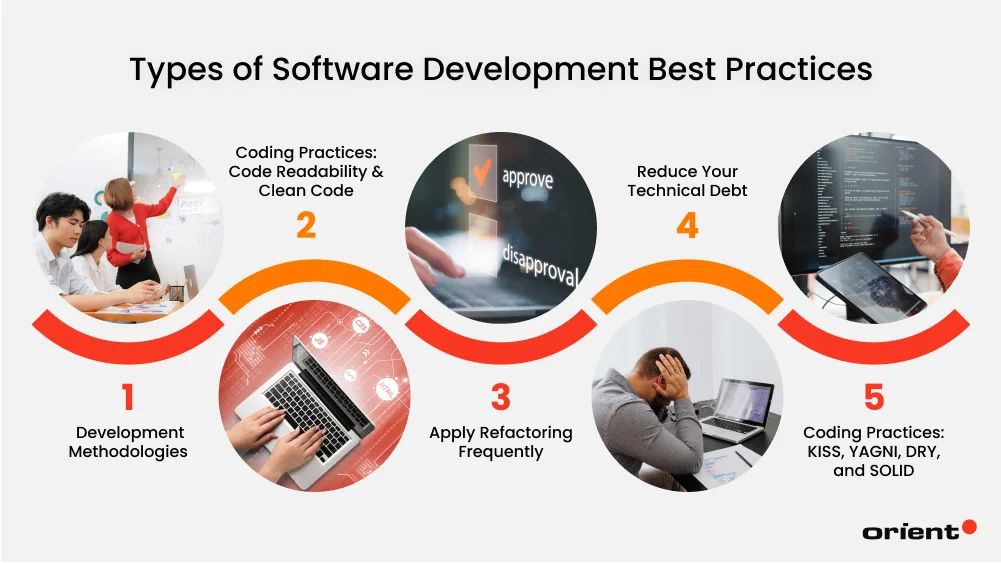
1. Development Methodologies
One of the core best practices in software engineering is the application of development methodologies. Although different methodologies serve different project needs and development environments, they all have the same in common which is providing teams more structured approaches for planning, building, testing, and maintaining software instead of working in an ad-hoc way. To achieve the benefits of agile, you will need first to change the way you think and execute your software projects.
We have several development methodologies/frameworks to choose from, like Waterfall, Agile, Scrum, Nexus, and Kanban.
- Waterfall: Waterfall, for example, forces you to have plans and a big pile of requirements that you try to implement in a highly structured project, which takes much longer and consumes a lot more effort than it should.
- Scrum: Scrum is a framework, a set of practices, that improves your quality, speed, and financial viability for software delivery projects. It’s not just the software development projects that benefit from it. Even product design and life cycle management can benefit from Scrum.
- Nexus: Nexus helps Scrum teams scale. Scaling agile to large and long-running projects that will deliver incremental product releases over time is challenging. Since it is often a lack of experience in teams to develop at scale, it is better to concentrate on known and proven practices, such as Scrum. Nexus takes the ideas of Scrum and puts them into a framework to scale with up to more than a hundred developers.
- Kanban: Kanban works by visualizing the amount of work required to deliver a new feature and then prioritizing and committing tasks to completion. In this process, developers oversee the project status reports. The value of such a practice is that it gives developers visibility of their status. You should choose the methodology that fits your organization.
2. Coding Practices: Code Readability & Clean Code
How readable the code is, is often considered one of the highest quality features in software. When we talk about clean code, we aren’t just referring to making software look neat. Rather, it is about writing code that any software developer, including your future self, to easily understand, maintain, and extend.
Your organization is responsible for ensuring your team reads each other’s code and commits only quality code. Poor code readability leads to problems such as bugs and less stable software, and you may have to rewrite part of your software, which will affect your team’s velocity.
Make sure your team learns about clean coding practices. This may take time during the process, but following this software engineering practice helps you spend less time fixing technical debt and more time delivering new features in the long run. Linters and static code analysis are some code quality tools you can use to make code improvements.
And remember, not to rely on code comments only to make clean code as they can be outdated without frequently updated.
3. Apply Refactoring Frequently
Software refactoring is the process of modifying or restructuring existing code to make it easier to understand, easier to maintain, and easier to change. For example, you might change the name of a method or how it is called.
Refactoring allows you to add flexibility to your system to meet changing requirements or accommodate future code changes. Refactoring involves understanding existing code and requirements, restructuring the code for simpler maintenance, making changes to existing code structure to achieve the required flexibility, validating the change against requirements, and finally putting the change into production code.
4. Reduce Your Technical Debt
Technical debt is used in the software industry to cover debt due to bugs, legacy code, or missing documentation. It is typically used interchangeably with design debt or code debt. When development teams take actions to expedite the delivery of a piece of functionality or project, they take on technical debt, which later needs to be refactored. Technical debt is the result of prioritizing speedy delivery over perfect code. To build a better product is to consider your existing code as debt. Refactoring and debt reduction will enable your organization to put your current customers first and make sure your debt is as small as possible. In addition, your code must be easy to understand, maintainable, bug-free, and reliable.
5. Coding Practices: KISS, YAGNI, DRY, and SOLID
These are some of the many acronyms in software.
- KISS stands for “Keep It Simple, Stupid.” Often, developers make things more complex than they need to be. You should prefer simple solutions over advanced solutions if the simple solution fulfills the requirements.
- YAGNI, “You Aren’t Gonna Need It;” developers often make things too general to cater to future requirements, and this is usually not a good idea.
- DRY, “Don’t Repeat Yourself,” reminds us that duplicate code leads to more code, and more code is harder and more expensive to maintain.
- Finally, the SOLID acronym stands for Single responsibility principle, Open-closed principle, Liskov substitution principle, Interface segregation principle, and Dependency inversion principle. If you follow these coding principles, you will produce better code that is easier to maintain.
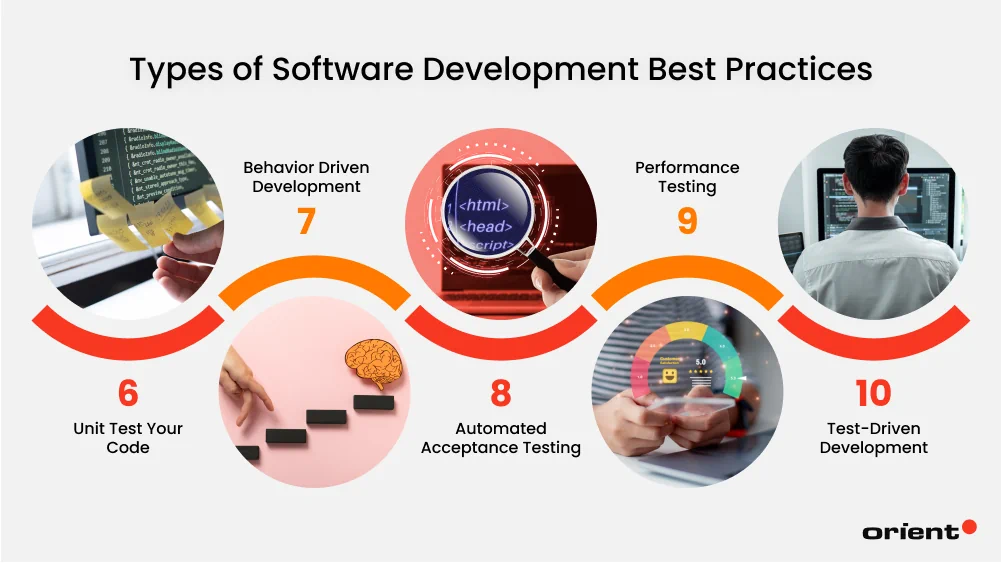
6. Unit Test Your Code
Unit tests are the number one practice when developing software. By writing tests based on individual components, unit testing can expose potential issues early in the software development process. In most projects, relying only on manual testing would be impossible due to the complexity of the software and the frequent release cycles. You need to unit test most of the software you write. When the automatic unit test fails, you know right away what is wrong.
7. Behavior Driven Development
Software development is often a time-consuming and expensive process, and inefficient communication between engineers and business professionals can be a bottleneck to project progress. Engineers often misunderstand what the business needs from its software, and business professionals often misunderstand the capabilities of their technical team.
BDD, or Behaviour-Driven Development, is a form of development that focuses on the behavior and expectations of the software’s users. It can be divided into two parts: writing examples in ubiquitous language to illustrate user behaviors and using those examples as automated tests. This method ensures that functionality and the business’s vision for the system are maintained throughout development.
8. Automated Acceptance Testing
An acceptance test is a formal specification of how a software product should act and is expressed as a usage scenario or use case.
Automated acceptance testing is an integral part of a continuous delivery strategy. Developers must own the responsibility to make sure that these automated tests are passing and running smoothly.
By describing the acceptance test with BDD, you will be able to run automated acceptance test suites in DevOps software such as CircleCI, Jenkins, or Azure DevOps.
9. Performance Testing
Performance testing is the study and testing of the performance of an application as it meets certain criteria such as load or response time under specific conditions. By simulating different expected (and also unexpected) scenarios, developers can measure exactly how fast, stable, and scalable an application is, thereby having early solutions for bottlenecks before real users encounter them.
This type of software testing is often the last step before providing the software to an end-user and is especially suitable for applications that need to handle heavy traffic, large datasets, or real-time responses. Don’t skip this step, as your users will not be happy with slow or unresponsive software.
10. Test-Driven Development
Test-Driven Development (TDD) is a development practice that helps you improve the software quality and time to market by continuously and automatically running through various user-defined tests to understand the functional behavior of the software that your team is creating. This process is one of the practices of software engineering that helps handle the software product development process and improve the team’s overall working process.
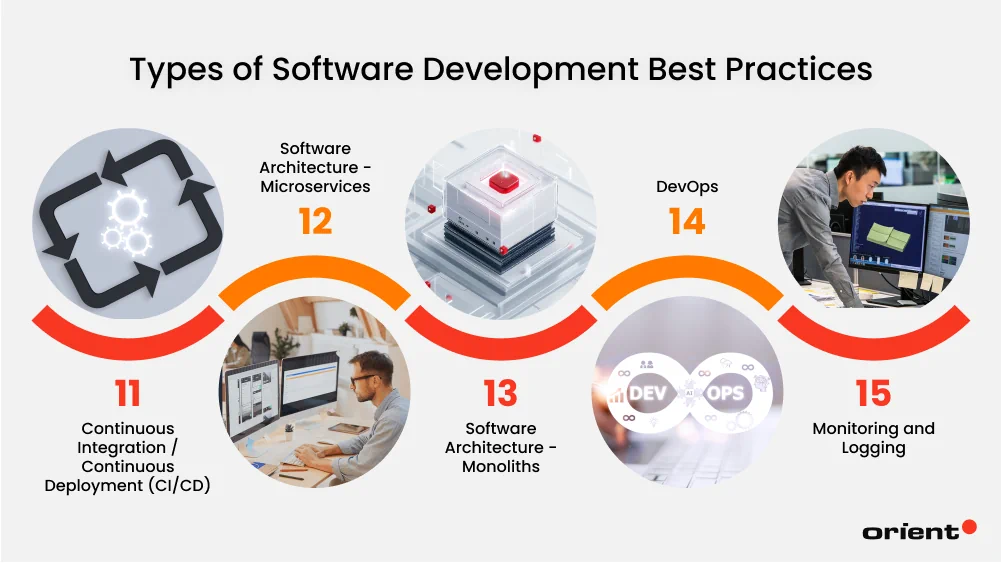
11. Continuous Integration / Continuous Deployment (CI/CD)
The agile software development approach requires every team member to integrate and deploy software changes to production. And this happens at least two times a day and every day. In addition, you need to make sure that every team member can track and fix problems quickly. These practices cover the whole software development life cycle, from coding/code reviewing to deployment/testing.
12. Software Architecture - Microservices
There is a growing trend of building software as a set of microservices. In general, a microservice is a simple building block that can be combined with other building blocks to form a complex system.
The primary advantage of using microservices is their flexibility, which is a direct consequence of separating functionality into small pieces. So, if you do not wish to maintain a monolith, adopting microservices is an option for you.
13. Software Architecture - Monoliths
A monolithic application structure is a good approach for applications that do not need microservices’ modular architecture. With monoliths, it is still essential to focus on separation of concerns (SoC). The main idea is to separate the functional concerns into different modules. Doing microservices right can be tricky, so sometimes, it makes sense to start with a monolith and refactor it into microservices if needed.
14. DevOps
DevOps is a set of development and operations practices that have emerged over the last several years in the software development field to help teams deliver projects in a highly agile way by merging software development and operations. DevOps aims to deliver software applications faster by introducing automation in almost everything.
DevOps is a mindset. This mindset encourages a flexible approach towards the product development process, considering the requirements, risks, and constraints of the various stakeholders involved, customer requirements, and working to meet the expectations.
15. Monitoring and Logging
Agile teams focus on continuous delivery, and doing so is challenging without monitoring and logging. You need to ensure that you can identify bugs in a controlled environment and trigger prompt corrective action for the development team. Observability is critical, so invest in a central monitoring and logging system like Elastic Stack, AWS CloudWatch, or Azure Monitor.
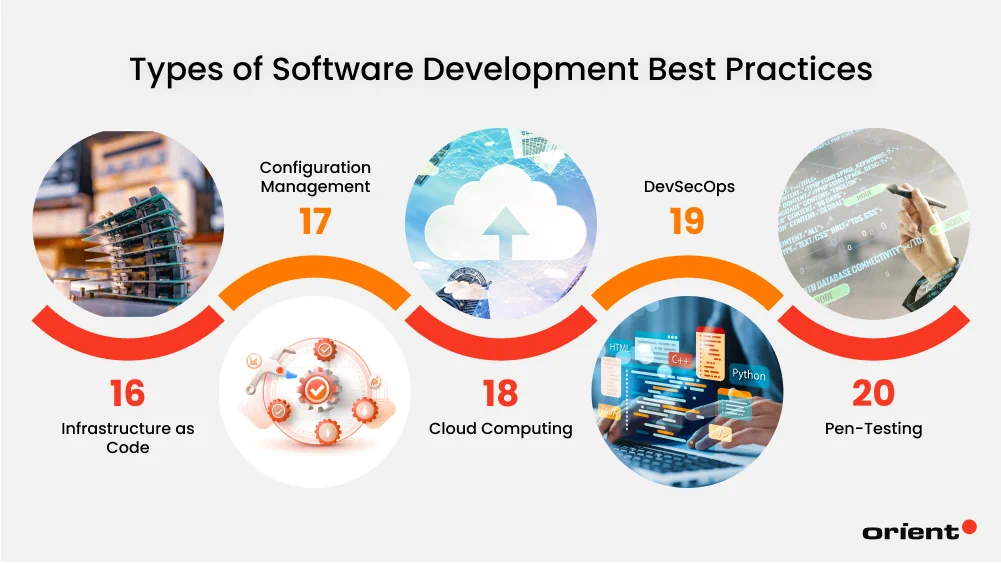
16. Infrastructure as Code
Infrastructure as code provides the ability to create, manage, and modify infrastructure in the cloud by using code. Terraform is one of the leading technologies for managing infrastructure as code. Infrastructure as code is important because you can then automate the infrastructure setup, which leads to more consistent and well-functioning infrastructure. You should store the infrastructure code in the version control system.
17. Configuration Management
Configuration management is the practice of configuring servers, applications, and infrastructure as code. There are many configuration management tools on the market, such as Ansible, Puppet, and Chef. You can use these technologies to configure servers and orchestrate automation tasks like installing the software for a database server, installing security patches to servers, and upgrading operating systems. Since these configurations are stored in code, it is testable and repeatable.
18. Cloud Computing
Developers will need to become familiar with platforms like Amazon Web Service, Microsoft’s Azure, and Google Cloud, as well as other cloud solutions like Apache’s CloudStack and OpenStack and IBM Cloud Orchestrator. Employees need training so they can maximize cloud development. Why?
Unlike in the past, when most companies had to buy and maintain their own physical servers, which were manual and expensive, cloud computing nowadays replaced all that with virtual, flexible, and scalable infrastructure you can spin up in minutes. This explain why most modern applications are now hosted in the cloud. Rather than an optional choice, cloud computing is the foundation of how today apps are built and scaled.
19. DevSecOps
How can you create the most secure software by understanding security vulnerabilities and prioritizing risk-based cybersecurity strategies, and adapting fast to the fast-changing requirements of today’s software? While it is quite challenging, we can use the new approach called DevSecOps to ensure an app’s security.
DevSecOps stands for Development, Security, and Operations and is an evolution of DevOps where security is no longer treated as a separate step at the end of the software development process but is integrated into every phase of development and deployment. It’s a software engineering practice dedicated to secure creation, delivery, and continuous software monitoring. With DevSecOps, security is embedded into the workflow from the very start and evaluated in real time for threats and misconfigurations using supported tools like Snyk, SonarQube, and Checkmarx.
20. Pen-Testing
Pen-testing is testing for vulnerabilities in software and hardware that your company will eventually use to deliver the service to your customers. The goal of pen-testing is to understand how your systems will respond to real-life problems before they arise and ensure that your systems are reliable and safe while implementing new features and functionality.
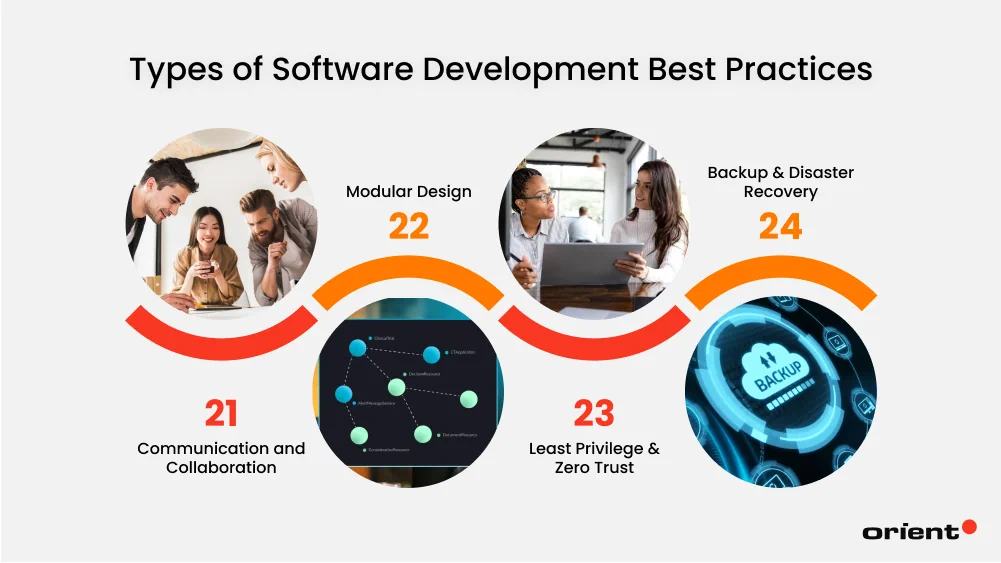
21. Communication and Collaboration
Communication and collaboration are crucial to achieving an agile approach. When having cross-functional teams, you need to ensure effective communication between team members and between individuals and the organization. In other words, people have to be all on the same page.
Communication is done through writing and different mediums like face-to-face meetings, voice, video, social media, or conference calls. Communication helps team members work together, understand problems, solve problems, and know what to do next. People will start in a consensus-based culture and progress to peer-to-peer working, eventually moving into self-organizing groups to address identified business needs.
22. Modular Design
Modular design refers to the approach of breaking a whole software system into smaller components called modules, where each independent part represents a specific function. The main purpose of this method is to create well-defined modules that can be developed, tested, and maintained separately. If a module needs to be replaced or upgraded, it can be done without disrupting the entire system. By managing your software this way, you can gain faster development cycles while reducing unnecessary complexity.
23. Least Privilege & Zero Trust
The principle of least privilege and zero trust is one of the best secure coding practices you can employ to protect your code integrity. Simply put, even your development team members, no user or system, whether inside or outside the network, should be trusted by default. Every access request must be verified and continuously monitored.
In situations where developers need to give third parties (e.g., contractors, auditors, external vendors, or even other internal teams) access to the app, code, or infrastructure, make sure you give them the permissions they need to perform their tasks and nothing more. This may sound strict at the beginning, but it helps you limit the damage that could be caused by accidental misuse or malicious attacks.
24. Backup & Disaster Recovery
No matter how well an application is developed, failures are inevitable. As we never know when hardware crashes, natural disasters, and cyberattacks occur, having backup and disaster recovery (BDR) is essential and should be considered as one of the software development standards. Without writing all from scratch if unexpected situations come, backups ensure that copies of important data and configurations are stored securely. You can then use them for any purposes immediately even in case the originals are lost.
Conclusion

Agile software development practices have matured, and agile software delivery has become the way to go. As you iteratively develop your products, your ability to deliver higher quality at higher speeds will enable you to accomplish your company’s goals quickly. But remember, it is not just the process that delivers your results, but the people who implement and apply the practices.
When choosing the set of best practices to focus on, a programmer’s experience matters. So, while junior engineers usually learn best practices for writing unit tests or avoiding code smells, seniors or technical leaders should learn best practices that impact the entire project or development process.
All in all, it is essential to follow software engineering conventions to keep the software maintainable while considering developers’ level also. Your organization will need to invest in these software engineering practices by training, coaching, tools, infrastructure, and time. Therefore, your business, technical, and management teams need to be fully engaged and committed to these practices to see the positive results from agile development practices.
If you don’t already have these software engineering practices in place, it’s time to start!
